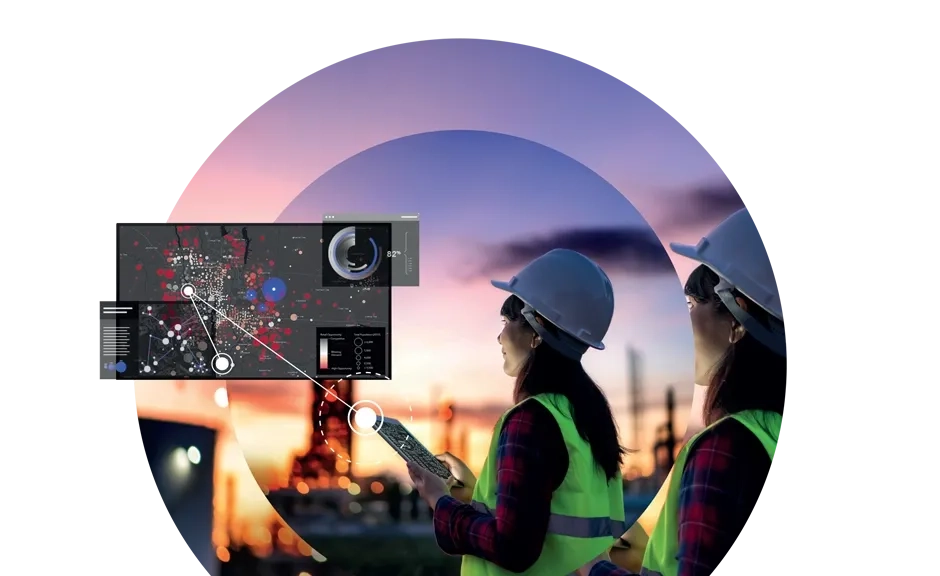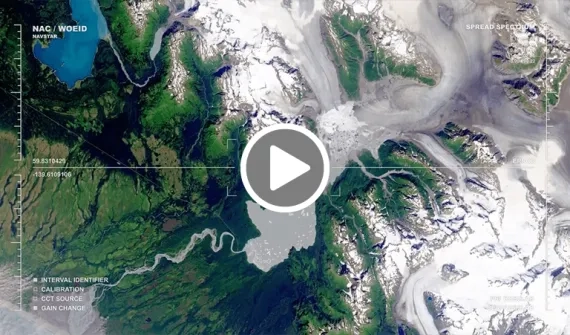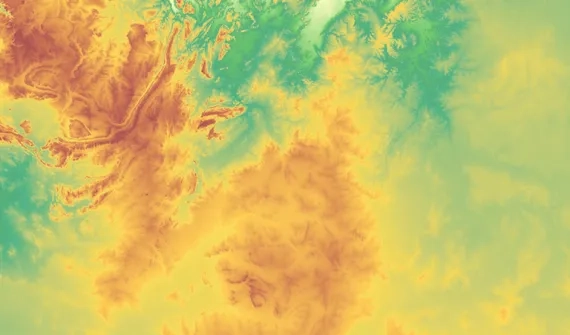Imagery and remote sensing technologies, including satellite, aerial, and drone imagery, generate insights by capturing, processing, and analysing data from the Earth’s surface. This helps drive data-driven decisions that lead to better outcomes.
Turning data into insights with ArcGIS imagery and remote sensing
Step 1 - Data capture
Satellites, drones, and sensors capture visible, hyperspectral, and multispectral data for a detailed view of Earth surface.
Step 2 - Data processing
Raw imagery is enhanced with geometric corrections, calibration, and enhancement using photogrammetry and LiDAR mapping to ensure precision and actionable datasets.
Step 3 - Analysis and modeling
Processed data is analysed with GIS tools to support urban planning, disaster management, and environmental assessments, producing 2D maps, 3D models, and digital twins.
Step 4 - GIS integration
Insights are integrated into ArcGIS platform, allowing you to visualise spatial relationships, track changes, and make real-time decisions.
Curious how GIS imagery and remote sensing could work for you? Schedule a project consultation with our speialists.
See imagery capabilities in action
Ready to explore possibilities? Get in touch with one of our experts to learn how you can manage large volumes of imagery and remotely sensed data.
FAQ
- What is reality mapping, and how does it benefit various industries?
Reality mapping uses advanced geospatial technologies like satellite imagery, drone mapping, and Light Detection and Ranging (LiDAR) to create real-time views of infrastructure and environments, enabling precise monitoring, risk detection, and faster, more informed decisions.
- How can Esri’s remote sensing tools help with risk management?
Esri’s remote sensing solutions combine satellite, LiDAR, and drone data for real-time mapping and predictive modelling, helping you identify risks early, manage them proactively, and reduce the impact of extreme events.
- What types of assets can Esri’s technology monitor?
Esri’s reality mapping technology provides detailed visuals and data on infrastructure, land, and environmental assets, helping you plan maintenance efficiently, prevent outages, and maintain peak performance.
- How can I use Esri’s solutions to track environmental quality?
Esri’s drone and satellite technology monitor environmental quality, detecting contaminants, measuring clarity, and tracking changes to support compliance and maintain safe, clean environments.
- What is LiDAR, and why is it important for various industries?
LiDAR (Light Detection and Ranging) is a remote sensing technology that uses laser light to create highly accurate 3D models of terrain and infrastructure. For various industries, LiDAR is invaluable for infrastructure planning, risk assessment, and detecting topographical changes that could impact resources.
- How does Esri’s technology help with regulatory compliance?
Esri’s tools provide real-time data and reporting that can help organisations meet local and national regulatory requirements. From tracking environmental quality to monitoring impacts, you’ll have access to the data needed to prove compliance and prepare for audits
- Can Esri’s solutions help with long-term infrastructure planning?
Yes. Esri’s reality mapping technology provides the insights you need to plan for future infrastructure upgrades and expansions. With precise data on existing assets and environmental conditions, you can make informed decisions that optimise performance, reduce costs, and ensure scalability.
- How quickly can I implement Esri’s Imagery & Remote Sensing solutions?
Esri’s solutions are designed to be scalable and flexible, meaning they can be integrated with your existing systems quickly and efficiently. Our team of experts will work with you to ensure a seamless deployment tailored to your specific needs.




